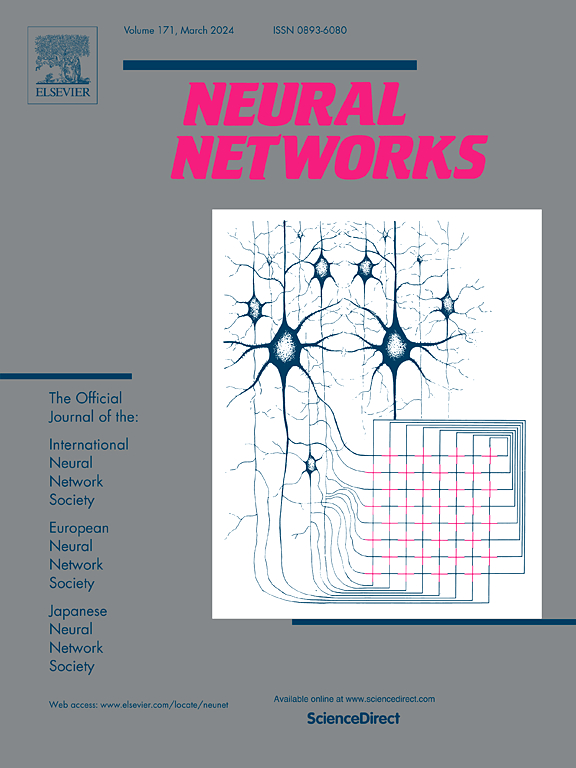Memristor-based circuit design of interweaving mechanism of emotional memory in a hippocamp-brain emotion learning model
IF 6
1区 计算机科学
Q1 COMPUTER SCIENCE, ARTIFICIAL INTELLIGENCE
引用次数: 0
Abstract
Endowing robots with human-like emotional and cognitive abilities has garnered widespread attention, driving deep investigations into the complexities of these processes. However, few studies have examined the intricate circuits that govern the interplay between emotion and memory. This work presents a memristive circuit design that generates emotional memory, mimicking human emotional responses and memories while enabling interaction between emotions and cognition. Leveraging the hippocampal-brain emotion learning (BEL) architecture, the memristive circuit comprises seven comprehensive modules: the thalamus, sensory cortex, orbitofrontal cortex, amygdala, dentate gyrus (DG), CA3, and CA1. This design incorporates a compact biological framework, facilitating the collaborative encoding of emotional memories by the amygdala and hippocampus and allowing for flexible adjustment of circuit parameters to accommodate diverse personality traits. The proposed memristor-based circuit effectively mimics the complex interplay between emotions and memory, providing a valuable foundation for advancing the development of robots capable of replicating human-like emotional responses and cognitive integration.
求助全文
约1分钟内获得全文
求助全文
来源期刊

Neural Networks
工程技术-计算机:人工智能
CiteScore
13.90
自引率
7.70%
发文量
425
审稿时长
67 days
期刊介绍:
Neural Networks is a platform that aims to foster an international community of scholars and practitioners interested in neural networks, deep learning, and other approaches to artificial intelligence and machine learning. Our journal invites submissions covering various aspects of neural networks research, from computational neuroscience and cognitive modeling to mathematical analyses and engineering applications. By providing a forum for interdisciplinary discussions between biology and technology, we aim to encourage the development of biologically-inspired artificial intelligence.
 求助内容:
求助内容: 应助结果提醒方式:
应助结果提醒方式:


